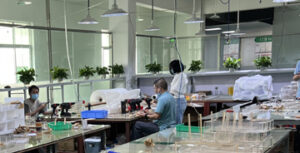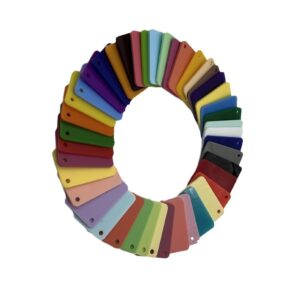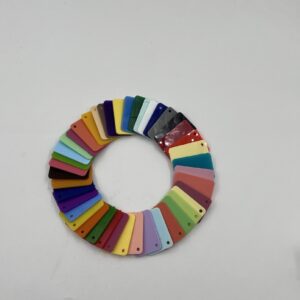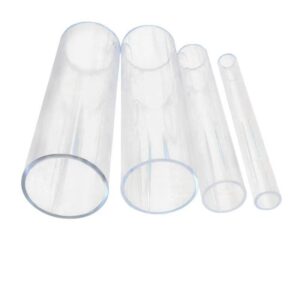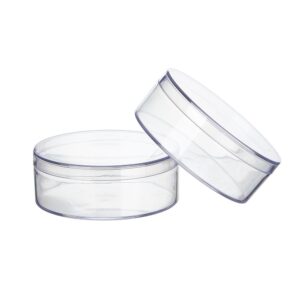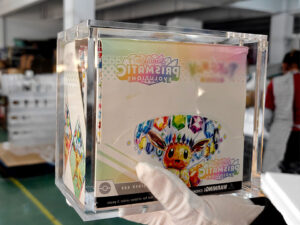Summary
Modular Acrylic Displays for Flexible Retail Layouts refers to customizable and adaptable display solutions made primarily from acrylic, a lightweight and durable material. These displays have gained prominence in the retail sector due to their ability to enhance product visibility, facilitate customer interaction, and align with sustainable practices, all of which are crucial in an increasingly competitive retail environment.
The evolution of modular designs has allowed retailers to create dynamic shopping experiences that can quickly respond to changing consumer preferences and seasonal trends, making them a vital component of modern retail strategy. The rise of acrylic as a display material emerged in the late 20th century, driven by its optical clarity, impact resistance, and ability to be manufactured from recycled sources. Innovations such as Recrylic® have further reduced the carbon footprint associated with display production, addressing growing concerns about sustainability in retail. As retailers prioritize eco-friendly solutions, the demand for modular displays made from responsibly sourced materials has surged, facilitating a transition away from traditional, single-use display methods.
Notably, modular acrylic displays are praised for their versatility, catering to various retail environments, including specialty stores, convenience shops, and temporary retail spaces. Their design allows for easy reconfiguration, enabling businesses to optimize layouts for promotional events or product launches. However, the use of these displays is not without challenges. Issues such as susceptibility to scratches, maintenance requirements, and environmental concerns regarding traditional acrylic production processes must be addressed for retailers to fully realize the benefits of modular systems.
As the retail landscape continues to evolve, trends indicate a strong future for modular acrylic displays, particularly with the integration of digital technologies and innovative materials. Retailers are increasingly focused on creating engaging in-store experiences to attract consumers back to brick-and-mortar locations, positioning modular acrylic displays as a key element in enhancing the overall shopping experience while aligning with sustainability goals.
Table of Contents
History
Evolution of Modular Acrylic Displays
The concept of modular displays has undergone significant evolution over the years, driven by advancements in design and material technology. Initially, traditional displays dominated the retail landscape, often constructed from rigid materials that limited flexibility and adaptability. However, as consumer preferences shifted towards sustainability and versatility, manufacturers began exploring modular designs that could easily adapt to changing retail environments.
The Rise of Acrylic
Acrylic emerged as a popular material for displays in the late 20th century, noted for its optical clarity and impact resistance, making it an ideal choice for showcasing products effectively. The introduction of certified recycled acrylic, such as Recrylic®, marked a turning point in the industry. This innovative material not only matched the performance of virgin acrylic but also significantly reduced carbon emissions by 90%, aligning with growing sustainability goals among retailers.
Key Innovations
The integration of modularity into acrylic displays allowed for greater customization, with designs tailored to meet specific business needs. This adaptability became particularly important as the retail landscape evolved, with businesses seeking solutions that could accommodate a wide range of products and visual merchandising strategies. The flexibility of modular designs enabled retailers to create dynamic spaces that could be reconfigured easily for seasonal promotions or changing consumer trends.
Sustainability and Consumer Demand
As awareness of environmental issues grew, the demand for sustainable display solutions increased. Retailers began prioritizing displays made from recycled or responsibly sourced materials, transitioning from traditional single-use products to more eco-friendly options. This shift not only helped brands enhance their environmental profile but also catered to consumer expectations for sustainable shopping experiences.
Current Trends and Future Directions
Looking ahead, the focus on modular designs continues to gain traction as businesses increasingly recognize the benefits of versatility and longevity. Retail display trends are expected to evolve further in the coming years, with an emphasis on integrating digital technologies and bold designs, while maintaining sustainability as a core standard rather than an added bonus. The ongoing exploration of innovative materials, such as bio-based polymers, presents new opportunities for the future of modular acrylic displays, although challenges in scaling production remain.
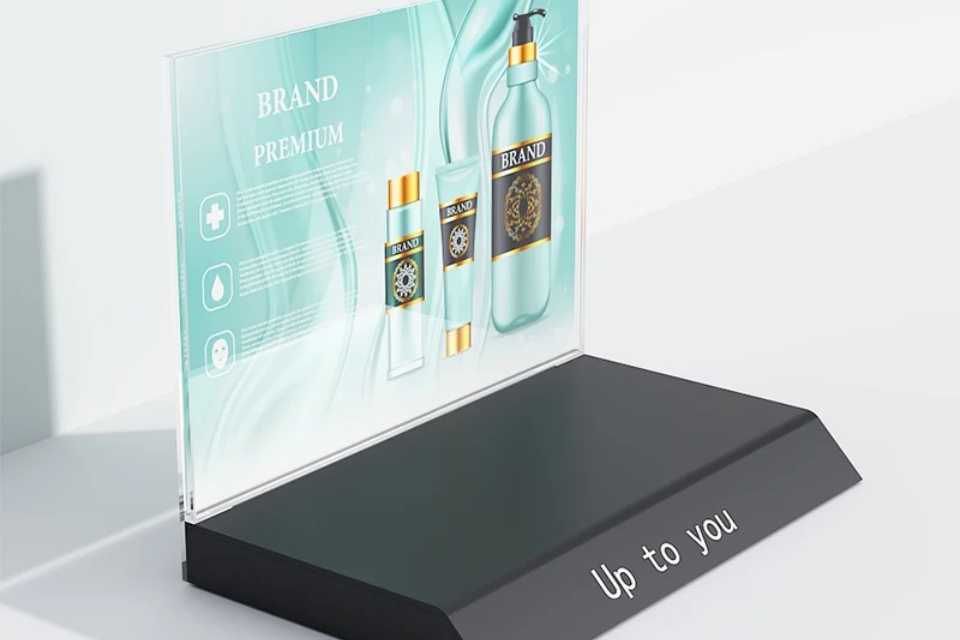
Design Features
Aesthetic Considerations
Modular acrylic displays are designed to offer clean and coherent aesthetics, which are essential in retail environments. This design principle ensures that each component—be it materials, finishes, or branding elements—aligns with the brand’s tone and identity, avoiding generic fixtures that dilute brand recognition. The flexibility of modular design allows retailers to create visually engaging spaces that can be quickly adapted or reconfigured based on seasonal trends or specific marketing campaigns.
Functionality and Interactivity
The functionality of modular acrylic displays is enhanced by their ability to facilitate customer interaction. Retailers are increasingly opting for designs that invite shoppers to rearrange or co-curate selections, thereby fostering stronger emotional connections with the products. For instance, brands like Muji have successfully implemented modular units in their flagship stores, allowing customers to build personalized gift sets, which resulted in significant increases in sales during peak shopping periods.
Sustainable Practices
Sustainability is a key consideration in the design of modular acrylic displays. These displays can be reused and reconfigured, minimizing waste and aligning with consumer preferences for eco-friendly practices. The materials used, such as acrylic, are not only cost-effective and durable but also offer a more sustainable option compared to traditional display methods, which often involve more waste and less flexibility.
Versatility in Application
Modular acrylic designs excel in dynamic retail settings, including pop-up shops and trade shows. Their ease of assembly and customization allows businesses to adapt their layouts quickly to respond to market demands or specific promotional needs. The modular nature of these displays simplifies logistics and reduces setup time, making them ideal for businesses that require quick turnarounds and frequent updates to their retail environments.
Material Benefits
Acrylic as a material brings several advantages to modular display design. It offers high transparency, which is vital for showcasing products effectively, allowing up to 92% of visible light to pass through. This clarity enhances the visibility of displayed items, drawing consumer attention. Additionally, acrylic’s impact resistance and durability make it a practical choice for displays that need to withstand frequent handling and repositioning. The versatility of acrylic also extends to its aesthetic qualities, as it can be manufactured in various colors and finishes, further enhancing the retail experience.
By integrating these design features, modular acrylic displays not only enhance the visual appeal of retail spaces but also improve functionality and sustainability, making them an increasingly popular choice among retailers.

Applications
Modular acrylic displays have gained significant traction in the retail sector due to their versatility and adaptability to various environments. These displays are particularly beneficial for specialty stores, convenience stores, and temporary retail spaces, offering tailored solutions that enhance the shopping experience.
Specialty Stores
Specialty stores, which focus on specific product categories like fashion, electronics, or home decor, heavily rely on customized modular display solutions to create unique shopping environments. These displays not only support brand storytelling but also differentiate products through eye-catching arrangements. Retailers often invest in innovative displays that reflect their brand identity and engage customers, driving demand for aesthetically pleasing and functional designs.
Convenience Stores
In convenience stores, where space is often limited, modular acrylic displays are favored for their compactness and efficiency. These displays maximize product visibility while maintaining an organized layout. As convenience stores expand their offerings to include ready-to-eat meals and grab-and-go options, the need for refrigerated modular display cases has increased, allowing retailers to keep food items fresh and accessible to customers.
Temporary Retail Spaces
The rise of experiential retail has spurred demand for flexible display solutions in temporary retail environments such as pop-up shops and kiosks. Modular acrylic displays support this trend by allowing retailers to quickly adapt their layouts and merchandising strategies based on customer preferences and behaviors. This adaptability enables brands to create engaging shopping experiences that resonate with consumers.
Event Marketing
Beyond traditional retail, modular displays are increasingly utilized in event marketing, including trade shows and product launches. Their ability to be reconfigured for different spaces makes them ideal for businesses looking to maintain a strong presence across various events. The reusable nature of modular trade show displays also offers cost savings, making them a practical choice for brands aiming to stand out in competitive markets.
Digital Integration
Incorporating technology into modular acrylic displays enhances customer engagement and operational efficiency. Retailers are increasingly blending physical displays with digital elements, such as integrated tablet holders and digital signage. This combination not only attracts attention but also provides customers with valuable information, promoting a more interactive shopping experience.

Advantages
Modular acrylic displays offer numerous advantages for retail environments, significantly enhancing both product presentation and customer experience.
Aesthetic Appeal
The modern, sleek design of acrylic enhances the overall aesthetic of retail spaces. The glossy finish of acrylic not only reflects light beautifully but also adds a sophisticated touch that complements various store aesthetics, from high-end boutiques to minimalist setups. This aesthetic appeal can draw customers in and create a more inviting shopping atmosphere.
Enhanced Product Visibility
One of the primary benefits of acrylic displays is their ability to enhance product visibility. Unlike traditional shelving units, which may obstruct the view of products, acrylic displays provide an unobstructed perspective, allowing customers to see merchandise from various angles. This increased visibility not only improves the shopping experience but also encourages impulse purchases, as customers can easily assess the appeal of products on display.
Versatility in Design
Acrylic displays are renowned for their versatility. They can be designed in various shapes and sizes to accommodate different retail spaces and product types. This flexibility allows retailers to adapt displays to changing inventory or seasonal trends, fostering a dynamic shopping environment. Additionally, acrylic’s inherent strength enables it to support a wide range of items while maintaining a sleek appearance.
Cost-Effectiveness and Durability
Acrylic displays are cost-effective due to their durability and low maintenance requirements. They are resistant to breaking and can withstand the wear and tear of a busy retail environment, leading to long-term savings for businesses. The durability of acrylic means that retailers can invest in displays that last, ultimately resulting in a higher return on investment over time.
Modular Flexibility
A key feature of modular acrylic displays is their adaptability. Retailers can easily reconfigure layouts to optimize traffic flow and product placement, making it simpler to create a flexible store layout. This adaptability allows for rapid changes in response to consumer trends or inventory needs, ensuring that the retail space remains fresh and engaging.
Support for Effective Merchandising
Effective merchandising is crucial in retail, and modular acrylic displays facilitate this by allowing retailers to experiment with different arrangements and configurations. Retailers can utilize displays with wheels for easy repositioning and can create eye-catching focal points at strategic heights, enhancing customer engagement. Such setups not only optimize the use of space but also guide customers through the store in an enjoyable manner.
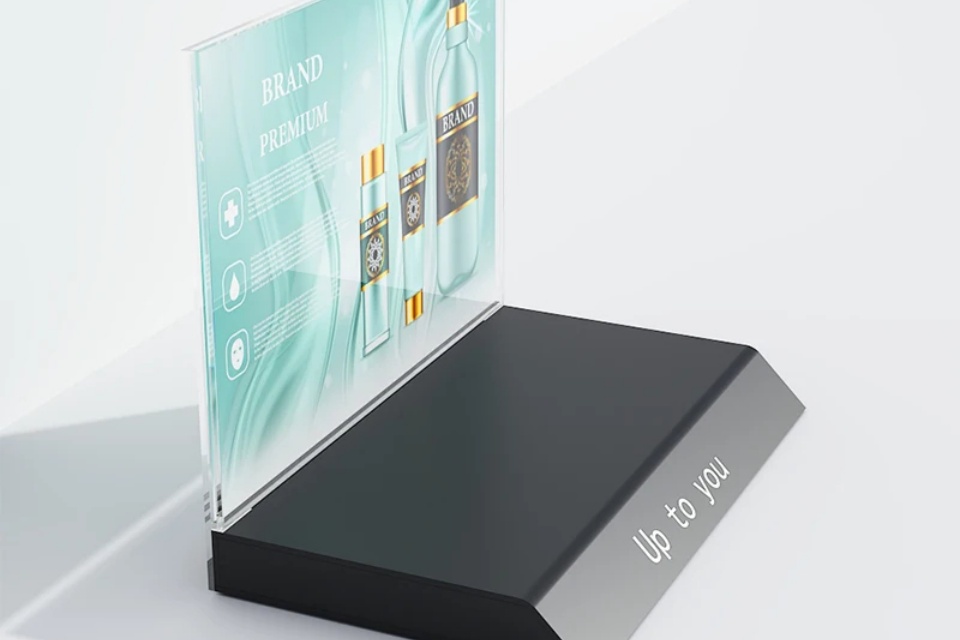
Challenges
Modular acrylic displays offer numerous advantages, including flexibility and aesthetic appeal, but they also face several challenges that impact their implementation and effectiveness in retail environments.
Material Limitations
While acrylic is known for its optical clarity and lightweight nature, it is not immune to certain limitations. Acrylic displays are susceptible to scratches and surface damage, which can detract from their visual appeal over time. Additionally, while acrylic is shatter-resistant, it can still break under excessive force, necessitating careful handling during installation and transport. This risk is heightened in high-traffic retail areas, where displays may experience frequent contact.
Maintenance Concerns
Despite their ease of maintenance compared to wood or metal displays, acrylic stands require regular cleaning to prevent clouding and maintain their polished appearance. Retailers must allocate time and resources for proper upkeep, as neglecting maintenance can lead to a deterioration in the overall look of the displays, ultimately affecting product visibility and consumer perception.
Environmental Impact
As sustainability becomes increasingly important in retail, manufacturers of acrylic displays face pressure to minimize their environmental footprint. Although advances are being made in recycling technologies and the development of bio-based acrylic alternatives, the traditional production processes of acrylic can still pose environmental challenges. Retailers must consider these factors when selecting displays, as consumers are becoming more conscious of the ecological implications of their purchasing decisions.
Design Adaptability
While modular designs are inherently flexible, they can also lead to challenges in ensuring that components are compatible with existing store layouts and display systems. Retailers may encounter difficulties when integrating new modular systems with older display fixtures, leading to potential mismatches in aesthetics and functionality. Furthermore, the evolving nature of retail spaces requires continuous adaptations to display designs, which can complicate inventory management and increase costs.
Cost Considerations
Although acrylic displays are often seen as a cost-effective solution, the initial investment in high-quality modular systems can be significant. Retailers need to weigh the upfront costs against the long-term benefits of durability and versatility. Additionally, there may be ongoing costs associated with maintenance and potential replacements, particularly if displays become damaged or outdated quickly.
Addressing these challenges requires a thoughtful approach to design, material selection, and maintenance practices, ensuring that modular acrylic displays not only enhance the retail environment but also align with broader business and sustainability goals.
Case Studies
Retail Implementation of Modular Acrylic Displays
The integration of modular acrylic displays in retail environments has provided numerous case studies demonstrating their effectiveness and versatility. For instance, a prominent clothing retailer adopted a modular display system that allowed them to easily rearrange their product layout based on seasonal promotions and customer trends. This adaptability not only maximized space utilization but also significantly enhanced customer engagement by creating dynamic shopping experiences that reflected current marketing strategies.
Customization in Unique Retail Settings
Another case study involves a pop-up shop that required a flexible display solution to showcase various products. By utilizing modular acrylic displays, the shop was able to create an attractive and functional layout that could be quickly assembled and disassembled as needed. This approach allowed the retailer to experiment with different arrangements and merchandising strategies without investing in permanent fixtures.
Enhancing Customer Interaction Through Innovative Design
A technology retailer showcased the benefits of modular displays by incorporating interactive elements within their acrylic systems. These displays included built-in sensors that tracked customer interactions and provided data on product engagement. This insight enabled the retailer to adjust their display configurations and product placements in real-time, leading to improved conversion rates and customer satisfaction.
Sustainability and Cost Efficiency
The emphasis on sustainability has also been a focal point in various case studies. One manufacturer developed a line of bio-based acrylic alternatives for modular displays, allowing retailers to minimize their environmental impact while maintaining aesthetic and functional standards. This innovation not only appealed to eco-conscious consumers but also provided cost savings due to reduced waste and resource consumption during the manufacturing process.
Future Trends
As we approach 2025, the retail landscape is set to undergo significant transformations driven by changing consumer expectations and innovative design solutions. Retailers are increasingly focused on optimizing their spaces to enhance customer experiences and drive sales. This trend is particularly pertinent for smaller retail establishments facing high real estate costs, where maximizing limited square footage becomes crucial. Solutions such as modular shelving and flexible display systems are gaining popularity as they allow store owners to maintain both functionality and aesthetic appeal while adapting to dynamic inventory needs.
Emphasis on Sustainability
Sustainability is a critical consideration shaping the future of modular acrylic displays. The industry is witnessing a shift towards eco-friendly materials and manufacturing processes. Manufacturers are exploring the use of recycled acrylic and bio-based polymers to reduce environmental impact while maintaining product quality. The integration of renewable energy sources and sustainable practices in production is becoming more prevalent, as retailers seek to align with consumer values regarding environmental responsibility. Furthermore, initiatives like take-back programs and modular design principles are being adopted to promote longevity and recyclability of display solutions.
Innovative Display Solutions
The use of acrylic in retail displays is evolving to incorporate advanced technologies and design principles. Retailers are increasingly leveraging digital printing techniques and UV-stable acrylics to create vibrant, durable displays that captivate consumers. The versatility of acrylic allows for a range of applications, from simple signage to complex, customizable merchandising displays that can be easily reconfigured to meet changing inventory demands. Minimalist and reusable designs are also trending, emphasizing efficient material use while maximizing visual impact, thus reducing waste and cost.
The Return of Bricks and Mortar
Interestingly, there is a notable trend toward revitalizing physical retail spaces. As online shopping continues to dominate, retailers are recognizing the value of enhancing in-store experiences to attract customers back to brick-and-mortar locations. Modular acrylic displays can play a significant role in this revival by offering flexible solutions that allow for dynamic and engaging product presentations, fostering a more personalized shopping experience.


